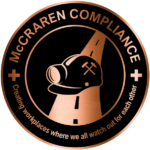
Photo: metamorworks/gettyimages
Geneva, Switzerland — Proactive policies are needed to ensure technologies such as artificial intelligence, digitalization, robotics and automation are implemented safely and equitably, according to the International Labor Organization.
For its report titled, Revolutionizing Health and Safety: The role of AI and digitalization at work, ILO reviewed policies and practices, interviewed key informants and conducted an in-depth desk review. The report examines automation and advanced robotics; smart occupational safety and health tools and monitoring systems; extended and virtual reality; algorithmic management of work; and changing work arrangements, including telework and digital labor platforms.
The impact of technology involves jobs across the globe, and maximizing digitization’s benefits on the job while mitigating risks calls for a proactive, evidence-informed approach that requires the active involvement of governments, employers, workers and safety professionals, ILO says.
For example, the addition of automation and advanced robotics can streamline physical and cognitive tasks, resulting in reduced exposure to hazardous environments and repetitive strain injuries. The concerns can include mechanical failures as well as ergonomic, psychosocial and physical risks, such as noise.
ILO recommends that risk assessments be conducted regularly to identify workplace hazards associated with digital technologies.
Other takeaways from the report:
- The Hierarchy of Controls should guide preventive measures and help ensure technology enhances worker safety and health rather than using it as a substitute for robust safety and health protections.
- AI-driven analytics, real-time monitoring systems and predictive modeling can enhance risk assessments and improve workplace safety strategies but shouldn’t replace human judgment in OSH practices.
- Preventive and control measures should be adapted to the needs of specific worker populations.
- Comprehensive training programs should equip workers with skills to safely use new technologies, recognize potential risks and respond effectively to emerging hazards. Training should be tailored to workers in high-risk and digitally intensive roles.
- To ensure workplace safety policies remain relevant as technology evolves, continuous evaluation and adaptation is necessary, along with incorporating worker feedback and the latest safety advancements.
McCraren Compliance offers many opportunities in safety training to help circumvent accidents. Please take a moment to visit our calendar of classes to see what we can do to help your safety measures from training to consulting.
Original article published by Safety+Health an NSC publication


